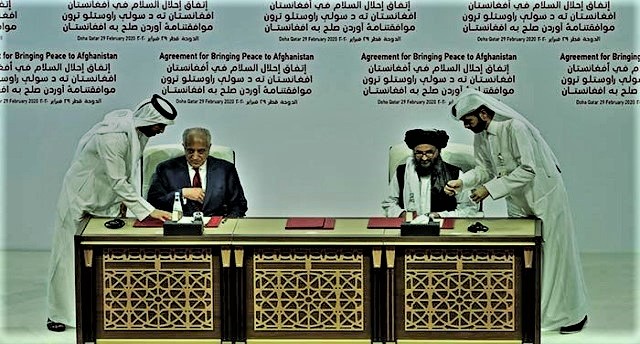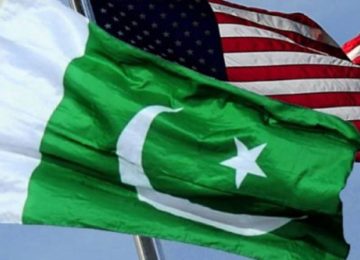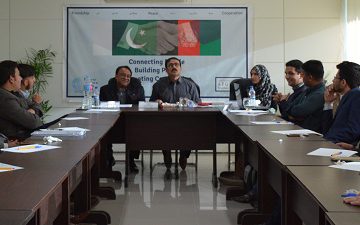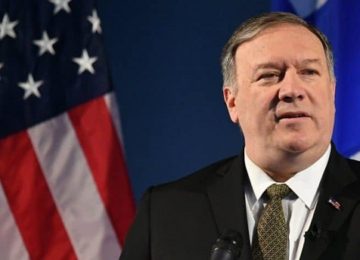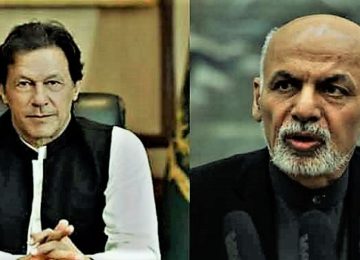March 31, 2020
Finally, after years of war in Afghanistan, the US has signed a peace agreement with the Taliban. On February 29 in Doha, Qatar, after nearly two years of consultations and negotiations, the agreement was signed between Zalmay Khalilzad, the US special envoy for peace talks in Afghanistan, and Mullah Abdul Ghani Baradar, brother of the Taliban’s deputy political adviser. In this article, we discuss the most important ambiguities and challenges of the peace process.
Formation of parallel governments
The dispute in Kabul between Afghan President Ashraf Ghani and former chief executive Abdullah Abdullah on forming a comprehensive government is continuing. But parallel governments actually prevent the formation of a comprehensive government. That means there would be two parallel governments, two presidents, two cabinets, and a division of geography in Afghanistan. Critics believe that if the current rival claimants for power in Afghanistan begin an armed conflict, the geography of the war fronts will shift from south and southeast Afghanistan to areas in the north of the country, and this would be worrying for the Afghan peace process.
On the other side, after the September elections in Afghanistan, US Secretary of State Mike Pompeo sought to resolve the political dispute between the two main rivals, but deep divisions prevented the formation of a new coalition government between Abdullah and Ghani. But if there is to be a dialogue between the Taliban and the Afghan government, the country will need a strong government. That means if Ghani and Abdullah don’t succeed in forming a comprehensive national government with the participation of all layers of society, it will undermine Kabul’s position in talks with the Taliban.
Lack of coordination
The Afghan government has been assessing its efforts in the peace talks in line with safeguarding of national interests. In Kabul’s view, it is an attempt to secure Afghanistan’s long-term stability and stability, and requires that the Taliban respect the constitution, cut ties with al-Qaeda and other terrorist groups and renounce violence.
But it should be borne in mind that national coordination of the current movements in the country is important in terms of the peace issue, and there should be no different or even contradictory and unpredictable views, policies and practices. There should also be some sort of political consensus on how to negotiate, the extent the participation of armed opponents in the political process, reforming or consolidating the constitution, integrating the Taliban into the government, and separating Afghan and non-Afghan Taliban in the country’s political factions.
Meanwhile, some opponents believe that the Taliban’s return to power is likely to dismiss some of the political factions in the north and reinforce Pashtuns.
Taliban’s internal dispersion
In the Taliban’s view, the recent deal between the US and the Taliban’s Islamic Emirates was based on religious principles, and no official from the Islamic Emirates should violate these agreements. However, there is no complete centrality among the Taliban. So the difference between the Taliban groups is one of the biggest obstacles to reaching peace. The position of opposing figures and the current differences between the Taliban factions and influential figures on whether to abandon their preconditions for ending the conflict in Afghanistan, how to adjust preconditions such as the release of Taliban prisoners, and so on are important.
As the Afghan Ministry of Defense’s former chief of staff Asadullah Khalid has said, the Taliban are in trouble, and there is some sort of crisis in the group. Some branches may breach the terms of the peace agreement, so the Taliban should control all its members. In fact, during the seven days of decreasing violence, the Taliban carried out large and small armed attacks in Balkh, Ghazni, Helmand, Uruzgan and some other provinces.
Currently, an offshoot of the Taliban is opposed to the US peace agreement, and some dissatisfied Taliban elements may defend some ISIS or other extremist groups.
The continuation of violence
Everyone expected that after the signing of the peace agreement between the Taliban and the United States, violence would be reduced and the ground for intra-Afghan negotiations be formed. But while the Taliban appear to have respected their agreement not to attack US and coalition forces, they have continued attacks on Afghan security forces. This is happening while there is no United Nations peacekeeping force or neutral third party to ensure security, and armed groups may be destructive to the peace process.
Opponents of the deal argue that the Taliban’s capacity to control violence is limited even they they wish to, and the release of 5,000 Taliban members may led to an increase in violence and also increasing opposition from Kabul.
Foreign actors
Global and regional actors in the Taliban peace process with Kabul should be in line with the process, or at least not diverge from it. Indeed, given the influence some foreign countries have on the Taliban, these actors actually have some effect on the Taliban’s attitude toward peace with the government. Moreover, some foreign actors also believe that any peace agreement should be in harmony with their national interests.
Trump’s political hopes
The signing of an agreement with the Taliban could be a win-win for US President Donald Trump as he seeks re-election. However, the United States has said that it will carefully monitor the Taliban’s commitments to its obligations and adjust its plan to withdraw its troops in line with future Taliban actions. So the signing of a peace agreement does not mean the end of the war, but the beginning of a long path that must be managed with all its dangers and benefits.
Vision for the future
What is clear is that the process of achieving a comprehensive peace with the Taliban in Afghanistan is very difficult. That means the challenges such as fully recognizing the Taliban and the Afghan government, discussing the nature of a NATO and US withdrawal, providing security and replacing the UN peacekeeping forces in the country, the Taliban’s commitment to human rights, women’s rights and religious minorities, inclusive elections and freedom in the future political system of Afghanistan, and the integration of the Taliban’s members into the current Afghan police and army will require lengthy and intensive negotiations.
Source: Asia Times
Disclaimer: Views expressed on this blog are not necessarily endorsed or supported by the Afghan Studies Center and Center for Research and Security Studies, Islamabad.



